
The First Aid Nursing Yeomanry (Princess Royal's Volunteer Corps) (FANY (PRVC)) is a British independent all-female registered charity formed in 1907 and active in both nursing and intelligence work during the World Wars. Its members wear a military-style uniform, but it is not part of the Regular Army or Army Reserve; members do not train at Sandhurst, nor do they hold a commission.
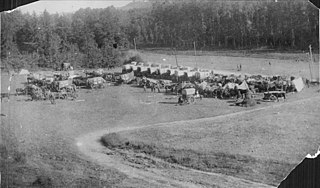
A field ambulance (FA) is the name used by the British Army and the armies of other Commonwealth nations to describe a mobile medical unit that treats wounded soldiers very close to the combat zone. In the British military medical system that developed during the First World War, the FAs formed an intermediate level in the casualty evacuation chain that stretched from the regimental aid posts near the front line and the casualty clearing stations located outside the range of the enemy's artillery. FAs were often assigned to the brigades of a division.
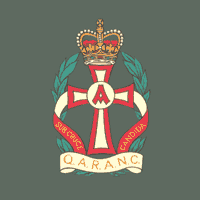
Queen Alexandra's Royal Army Nursing Corps is the nursing branch of the British Army Medical Services.
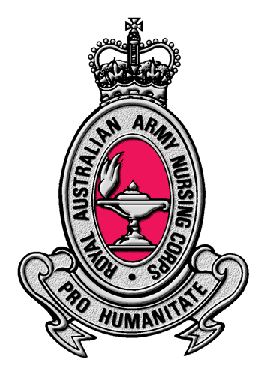
The Royal Australian Army Nursing Corps (RAANC) is a Administrative Corps of the Australian Army. It was formed in February 1951 from the Royal Australian Army Nursing Service. A Corps Badge was introduced in 1951 with the motto Pro Humanitate. It embraces the values of compassion and service to others, reflecting the care and dedication provided to the wounded and sick. Approval for the Corps flag was granted on 7 February 1958.

The term military medicine has a number of potential connotations. It may mean:
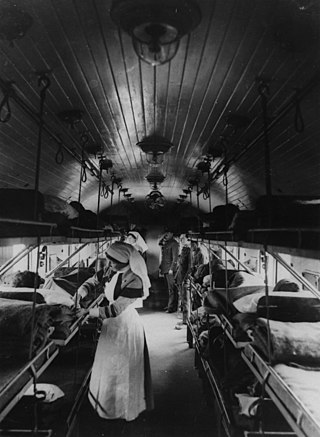
The Territorial Force Nursing Service (TFNS) was established in 1908, part of the reform of the British auxiliary forces introduced by Richard Haldane which created the Territorial Force. Nurses with at least three years of training were able to volunteer for the service, and facilities comprised 23 large buildings earmarked for use as hospitals in the event of war. The TFNS was augmented by the affiliation of Voluntary Aid Detachments. On the outbreak of the First World War, the hospitals were commissioned and up to 2,784 nurses mobilised to staff them. By the end of the war, up to 8,140 nurses had served with the TFNS, 2,280 of them in hospitals and casualty clearing stations abroad. After the war, the TFNS became the Territorial Army Nursing Service in line with the reconstitution of the Territorial Force as the Territorial Army.
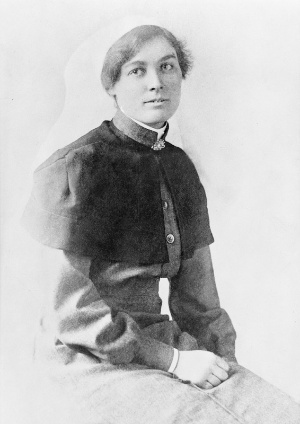
Elizabeth Pearl Corkhill, MM was an Australian military nurse of the First World War. Trained as a nurse in Sydney, Corkhill enlisted in the Australian Imperial Force on 4 June 1915. After serving in France at the 1st and 3rd Australian General Hospitals, Corkhill was assigned to the 38th British Casualty Clearing Station near Abbeville on 21 August 1918. On 23 August, while the camp was being heavily bombed by enemy aircraft, Corkhill remained calm and continued to tend to her patients, despite the danger. For her bravery, she was awarded the Military Medal, one of only seven Australian nurses to be so decorated in the First World War. Following the Armistice, she went on to work as a nurse at various public hospitals, and donated a large collection of her father's photographs to the National Library of Australia.
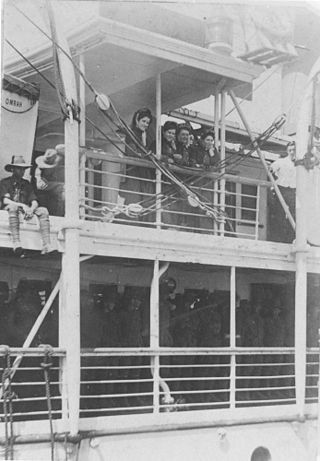
The role of Australian women in World War I was focused mainly upon their involvement in the provision of nursing services. Australian women also played a significant role on the Homefront, where they filled jobs made vacant by men joining the armed forces. Women also undertook fundraising and recruiting activities as well as organising comfort packages for soldiers serving overseas. Around the issue of conscription, women were involved in campaigning on both sides of the debate, while they were also equally involved in the New South Wales strike in 1917. Nevertheless, despite this involvement, women have never occupied a central position in the Australian version of the Anzac legend, although since the 1970s their role has been examined in more detail as a result of the emergence of feminist historiography, and specialist histories such as the history of nursing.

Grace Margaret Wilson was a high-ranked nurse in the Australian Army during World War I and the first years of World War II. Wilson was born in Brisbane, and completed her initial training as a nurse in 1908. After the outbreak of World War I she joined the Australian Army Nursing Service (AANS) and subsequently transferred to the First Australian Imperial Force. From 1915 until 1919 she was the principal matron of the 3rd Australian General Hospital. She served as the temporary matron-in-chief in the AIF Headquarters, London from late 1917 until early 1918. Wilson returned to Australia in 1920 and left the AIF to work in civilian hospitals. She was appointed the matron-in-chief of the AANS in 1925, and in September 1940 joined the Second Australian Imperial Force. She served in the Middle East until August 1941, when she returned to Australia due to ill health. She left the Army the next month, but from September 1943 worked in the Department of Manpower Directorate (Victoria)'s nursing control section.
Canadian women in the World Wars became indispensable because the World Wars were total wars that required the maximum effort of the civilian population. While Canadians were deeply divided on the issue of conscription for men, there was wide agreement that women had important new roles to play in the home, in civic life, in industry, in nursing, and even in military uniforms. Historians debate whether there was much long-term impact on the postwar roles of women.
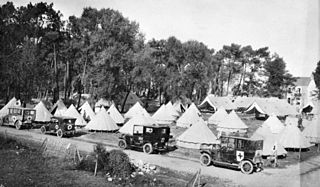
The Australian Voluntary Hospital was a military hospital staffed by Australian expatriates in England that served on the Western Front between 1914 and 1916. For most of the first year of the war, although not an Australian Army unit, it was an Australian presence on the Western Front.

The Royal Australian Air Force Nursing Service (RAAFNS) was a branch of the Royal Australian Air Force, which existed from 1940 to 1946, and from 1948 to 1977. Members served in World War II, the Korean War, the Malayan Emergency, and the Vietnam War.

Alice Appleford, was an Australian civilian and military nurse who took part in both World Wars. She has been described as Australia's most decorated woman. During the First World War she served in hospitals in Egypt and France and was one of only seven Australian nurses to be awarded the Military Medal for gallantry. In the Second World War she held a senior post within the Australian Army Medical Women's Service. In 1949 she was awarded the Florence Nightingale Medal, the highest award made by the International Committee of the Red Cross.

Jean Nellie Miles Walker RRC, was an Australian army nurse who served in Egypt during World War I. She was the only Tasmanian nurse to die on active service during World War I.
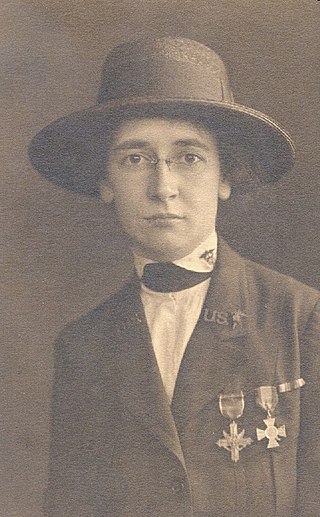
Helen Grace McClelland , a United States Army nurse, was awarded the United States Distinguished Service Cross and the British Royal Red Cross Medal for heroic actions during World War I while serving at a British Base Hospital in France. McClelland was one of only four women to receive the Distinguished Service Cross award during World War I. After returning to the United States, McClelland spent twenty-three years as Director of Pennsylvania Hospital's School of Nursing. In her role, McClelland advocated for the professionalization and modernization of nursing. McClelland was inducted into the Ohio Women's Hall of Fame in 1978.
Mabel Brown Clint, was a Canadian nurse and author. She served with the Canadian Expeditionary Force in France, Belgium, and Greece during the First World War. Born in Quebec, she worked as a nurse and volunteered for duty when war was declared in 1914. She embarked for the United Kingdom with the first set of troops and was among the first 100 nurses to serve near the Western Front in France. She published her memoir, Our Bit: Memories of War Service by a Canadian Nursing-Sister, in 1934.
Florence Elizabeth James-Wallace (1886–1970) was an Australian nurse, who served with the Australian Army Nursing Service during World War I. She and her unit were praised for their service in support of the Australian soldiers.

Sister Clare Deacon was an Australian nurse who was among the first women to receive the Military Medal for bravery during the First World War.
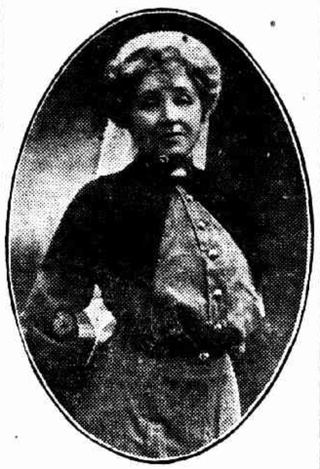
Adelaide Maud Kellett, was an Australian army nurse and hospital matron. She served with the Australian Army Nursing Service in the First World War and was matron of Sydney Hospital from 1921 to 1944.
















